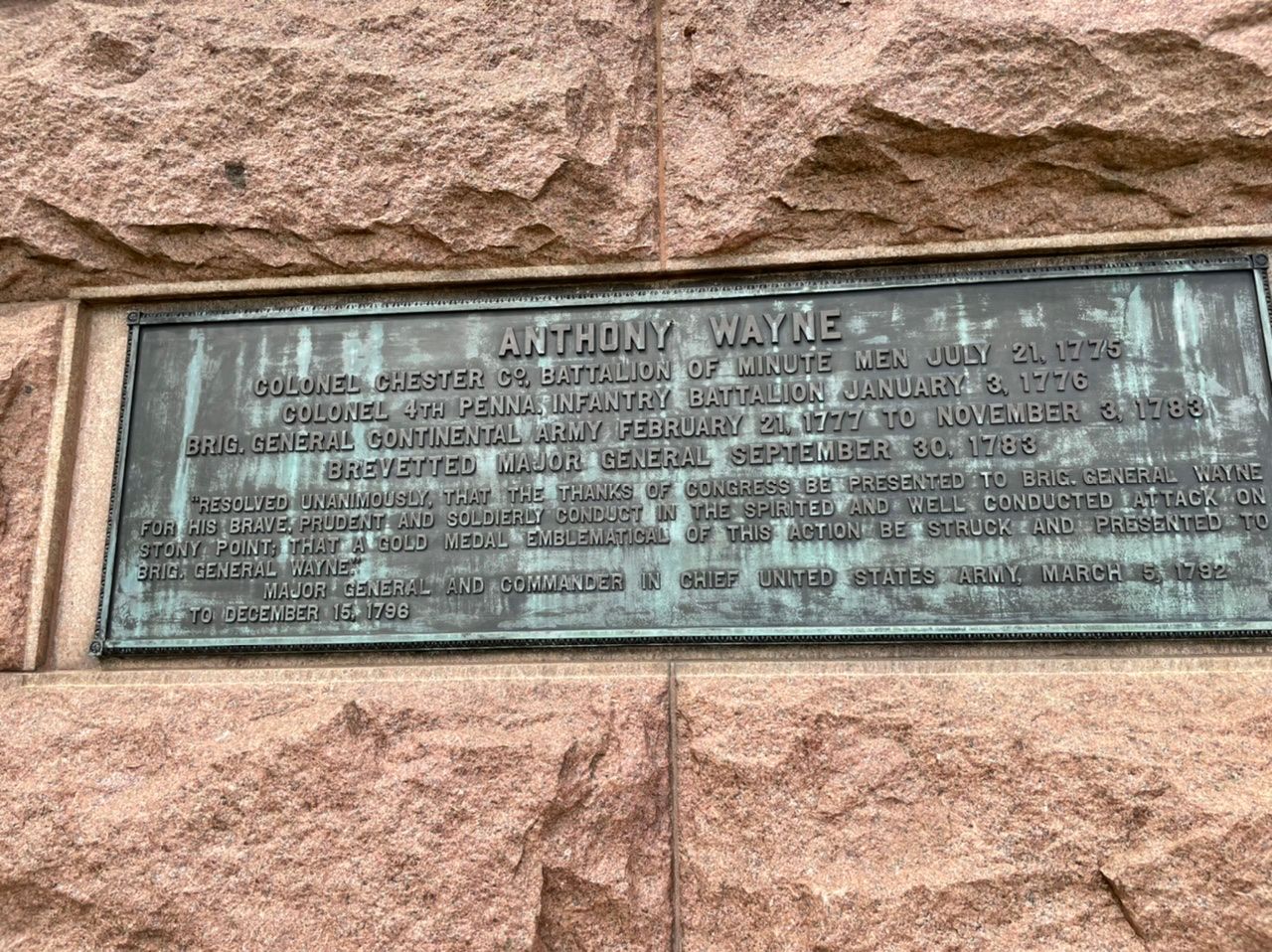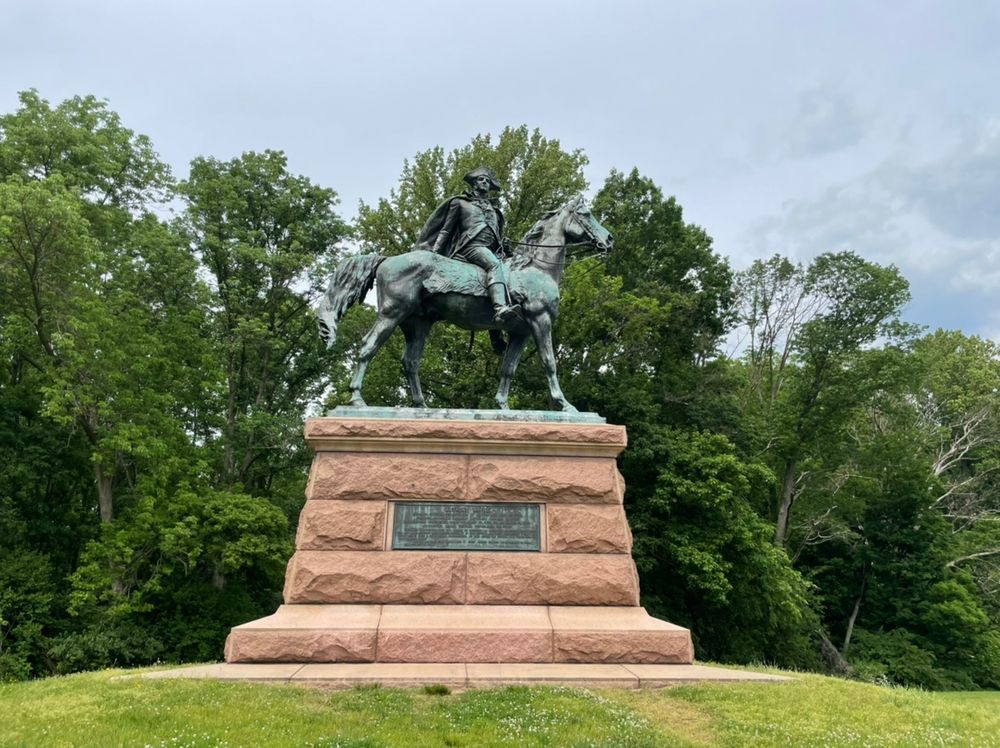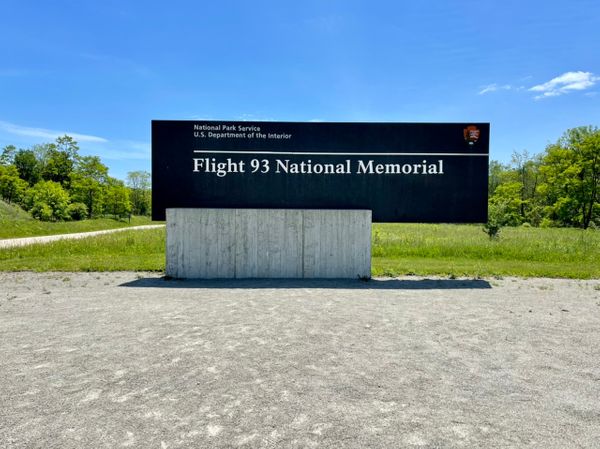Valley Forge National Historic Park: Wayne Statue
Stop 4 on the Encampment Tour at Valley Forge National Historic Park is the Wayne Statue. This didn't mean much to us until we pulled over and saw that the man's first name was Anthony. There’s a school district in northwest Ohio, named after an Anthony Wayne as well as a road and several other things, and we'd never really investigated who he was.

Anyhow, it is the same Anthony Wayne, popularly known as "Mad Anthony" Wayne due to his volatile temper. After seeing a giant statue of him at Valley Forge in Pennsylvania, I did a little research. Wayne was originally from eastern PA and raised a militia in 1775 to help with the revolution. He made his career during the Revolutionary War and it was because of that service that George Washington sent him to Ohio to deal with the (British-supported) Shawnee and Miami tribes trying to defend their lands against the Americans during the Northwest Indian War.
Wayne worked to destroy native lands, crops, and villages, which effectively ended the Northwest Indian War with Wayne’s triumph over the tribes at the Battle of Fallen Timbers in Maumee, OH in August 1794. After the battle, he went back to Fort Defiance and ordered troops to continue to decimate native lands, writing proudly to Henry Knox that they were destroying fields and villages. He's clearly been well commemorated and remembered in the area, and the fact that he's being celebrated for genocide is conveniently erased or at least glossed over.
Wayne, Pennsylvania, which is not far from Valley Forge, is named after him and so is Fort Wayne, Indiana. In the 1795 Treaty of Greenville, Ohio went to the United States of America and started the process for Ohio to become a state, and Indiana went to the tribes. Wayne died shortly after, in 1796.



